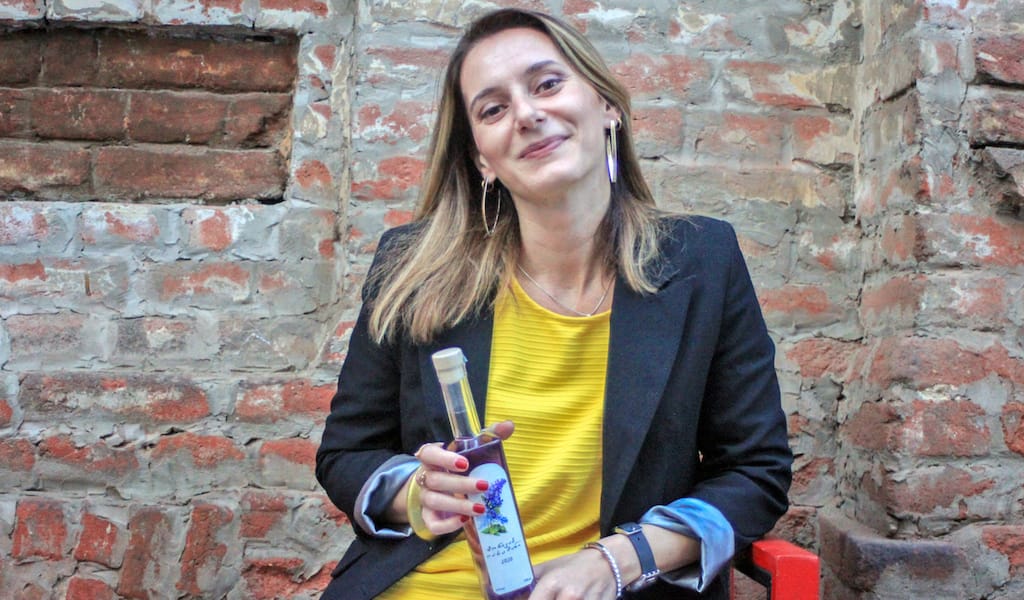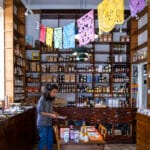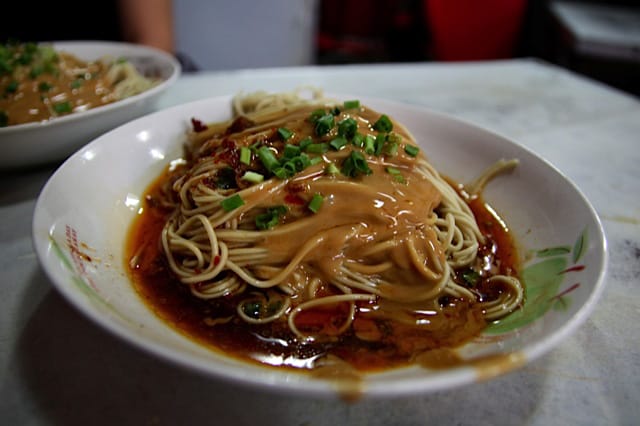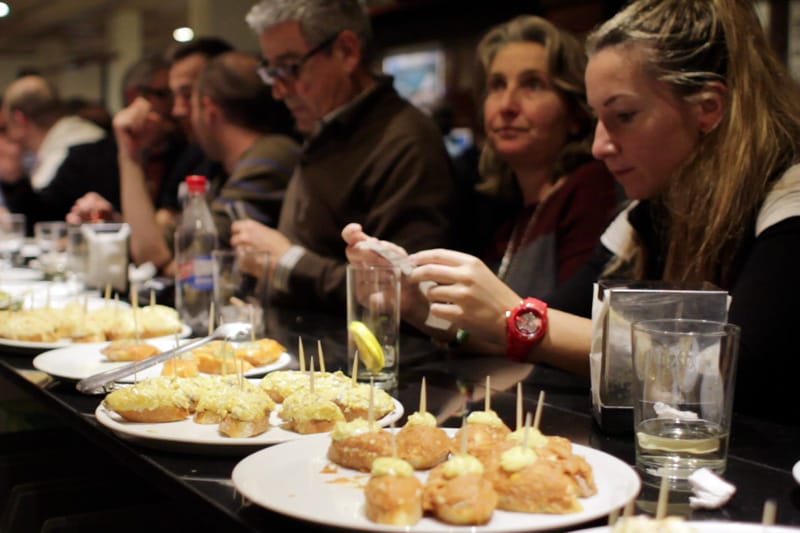We have a Georgian friend named Besik who worked in the Sudanese desert removing landmines. At base camp he came across an old pressure cooker and copper tubing and fashioned himself a little still he filled with fermented bananas. To his workmates, Beso was nothing less than a hero, as Sudan had been dry since 1983. “But banana chacha?” we cried. “Sure,” he said. “You can make chacha from any fruit.”
Technically, chacha is fermented grape pomace, but the word is also synonymous with “white lightening” and is used to describe any fruit-based spirit, including quince, feijoa and melon. There is now a flower-based chacha, too, thanks to a Tbilisi woman who has created a smooth distillation from lilacs.
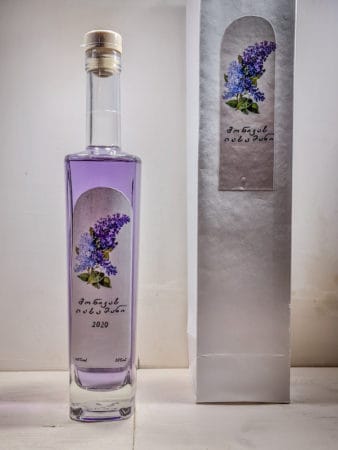
Monika Sandodze is not the first person in Georgia to turn flowers into alcohol. Lagidze Water has been turning roses into a luscious liqueur, but only as a step in the complicated process of making the syrup for their refreshing carbonated water. Unfortunately, they don’t bottle the booze. Flower-based spirits haven’t really gained any traction in this part of the world, although they’re more popular elsewhere: In parts of India they drink hooch made from mahua flower, and in France they cook a recipe with elderflower to make St. Germain Liqueur. Also in France, people in the provinces make a lilac liqueur, which is where Monika first tried it; an experience she would recall some 15 years later.
In 2004, Monika and her husband David moved to Bordeaux where she attended Montesquieu University for her masters in international finance and economy, and later commercial management of wine and spirits. Her husband, meanwhile, studied enology. They returned to Tbilisi in 2006 where she raised their first child before pursuing a career in finance; David worked in the wine industry. Their marriage, however, ended in 2016.
“When we divorced, I divorced myself from wine, too. That was his world,” Monika says of the field she departed from, albeit with a savvy palate. She found three years provided enough distance and, in 2019, signed up for a seminar at Tbilisi’s Vinemo Wine School to get back in the groove. “It was a new beginning,” the single mother of two says.
Soon, she crossed paths with Vato Botsadze, local spirits guru and owner of Chacha Corner. Through his tutelage, she discovered the nuances and splendor of chacha and brandy. “My first chacha was 76 percent [ABV]! I loved its aroma and flavor. Then Vato poured me some samples. He noticed I could feel the chacha,” she says.
As their friendship grew, Monika told him of the lilac liqueur she had tasted in France, and Vato encouraged her to try to make her own.
“One word can change your life. You just need someone to believe in you,” she says.
Monika grew up in the Shida Kartli town of Kareli and was always drawn to the arts, from singing to writing and drawing, but her father had insisted she would get an education in economics. Later, she became a working housewife and although she involved herself into David’s profession, she felt people never took her feedback seriously. “I was just the winemaker’s wife,” she recalls. “Now I have more joy. I have discovered the magic in me.”
Magic is an appropriate word for bewitching lilacs into liquor, the details of which she keeps locked away in her head. All she is willing to reveal is that the first 20 bottles needed around 40 kilos of lilacs her friends harvested high up near Mount Kazbegi. She then picked the petals by hand and took her recipe to a distiller Vato knows; they cooked her first batch of a most extraordinary chacha that she keeps at 40 percent ABV.
Magic is an appropriate word for bewitching lilacs into liquor, the details of which she keeps locked away in her head.
“One guy saw my Facebook post, contacted me and asked me how to make this. I told him to Google it and figure it out himself. He said he had and it brought him back to me,” she tells us.
Stoked with a mainline of self-confidence, Monika plans to try her recipe with rose, jasmine and lavender, and to grow lilacs back in Kareli. She confesses with a radiant smile that even though she is just a beginner – for now – chacha has brought out the inner artist in her.
“I never had the opportunity to really express myself. Now, I feel I am where I belong,” Monika confides. “Even if this doesn’t work out, I have changed myself, my life.”
Published on October 26, 2020
Related stories
March 17, 2013
ShanghaiSometimes a word in Chinese so perfectly captures a mood or feeling that the English approximation seems woefully inadequate. To take one example, the Chinese combine “hot” (热) and “noise” (闹) to describe the loud and lively nature of local hotspots, but in English, the best we can do is “bustling.” To experience what China’s…
June 19, 2023
MarseilleIn the center of town on Rue de Lodi, Saskia Porretta-Menne and Jill Cousin were inspired when they learned that a former international bookstore was closing and the space was available. The Librairie Internationale Maurel had been in the same family for three generations and operated since 1952 in a room that felt as if…
July 24, 2012
Barcelona | By Hollis Duncan
BarcelonaWhile even glass-half-full types are calling Spain’s economic forecast gray, the food climate in the Catalan capital couldn’t be sunnier. With packed tables, new venues such as Tickets and 41˚, and Spain’s hottest restaurant, Can Roca (recently voted #2 in the world) just a stone’s throw away in Girona, Barcelona’s restaurant scene provides an elixir…







































